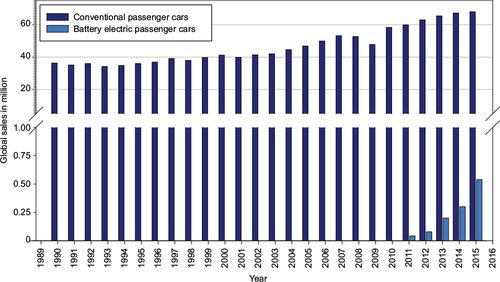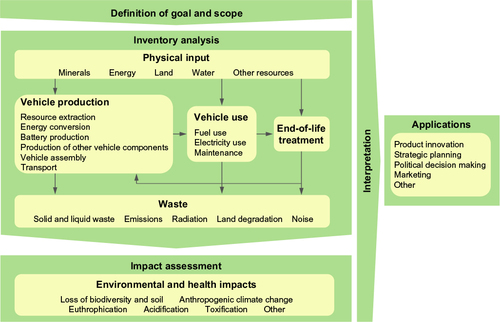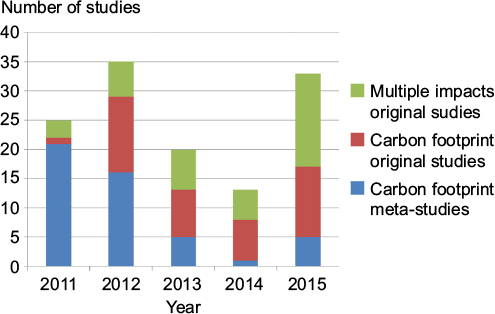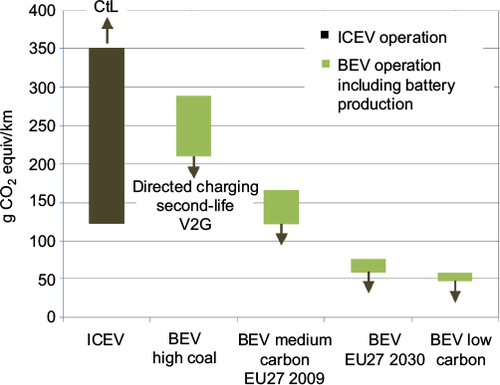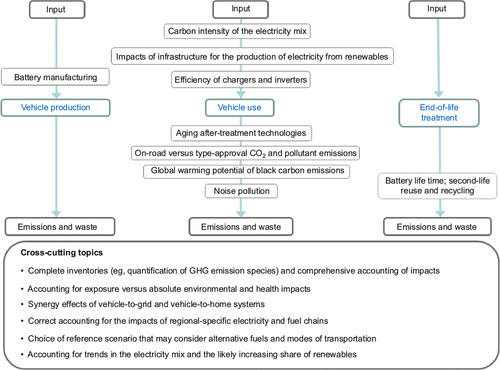Notes: ICEV: the minimum value (122 g CO
2/km; CO
2 emissions considered here only
instead of CO
2 equiv, resulting in deviations of just 1–2%)
Citation15 is based on the assumption that on-road emissions are 41% higher than the certified 73 g CO
2/km for the Toyota Prius IV
62 and that carbon losses along the fuel production and distribution chain reach on average 18%.
Citation15 The maximum value (354 g CO
2/km) assumes 13 L/100 km fuel consumption
Citation50 and likewise a supply chain losses of 18%. CtL: the use-phase carbon footprint can reach up to 787 g CO
2/km when based on CtL fuel.
Citation112 BEV: electricity consumption at charging point is 19–27 kWh/100 km; “BEV high coal” scenario is based on 1002 g CO
2 equiv/kWh in China.
Citation54 “BEV medium carbon” scenario is based on the EU27 electricity carbon footprint of 540 g CO
2/kWh in 2009;
Citation40 “BEV EU27 2030” scenario assumes a carbon footprint of 211 g CO
2 equiv/kWh (prediction);
Citation60 “BEV low carbon” scenario assumes a carbon footprint of 150 g CO
2 equiv/kWh (rounded from Helmers et al
Citation44). We add 18.3 g CO
2 equiv/km
22 to each BEV scenario to account for the carbon footprint of the battery.
